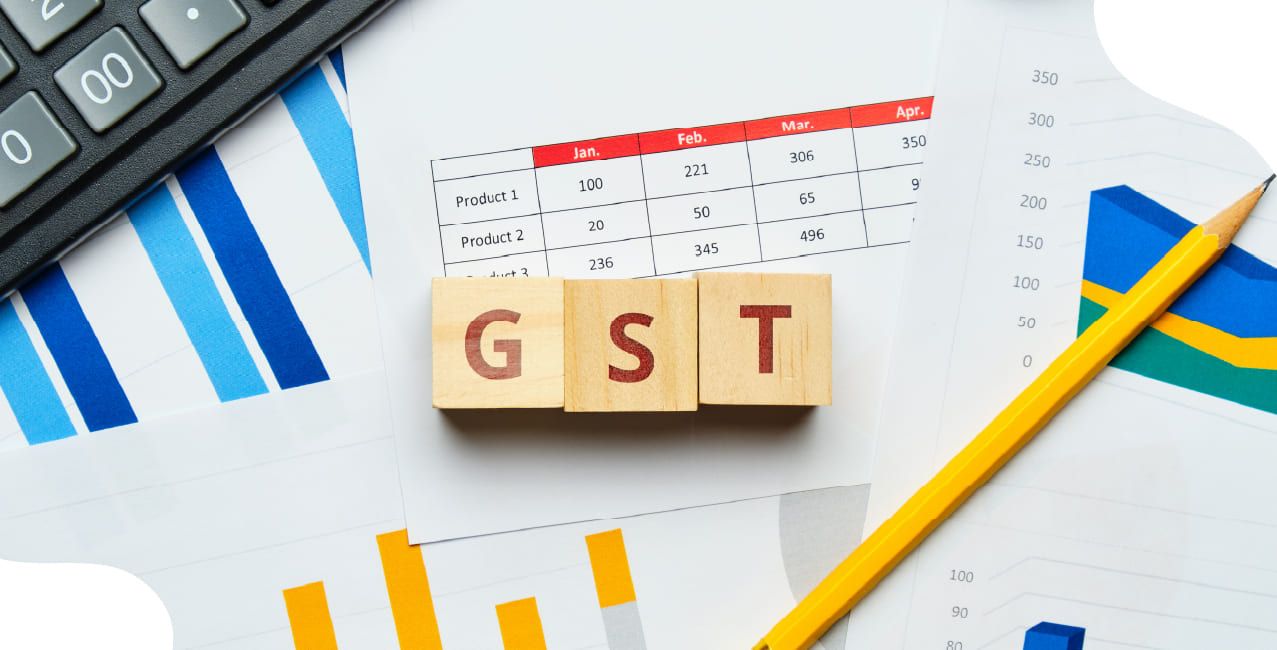
Author
LoansJagat Team
Read Time
6 Min
20 Sep 2025
GST on Luxury Items – Latest Rates, Impact & Tax Slabs Explained
Key Takeaways
- Goods and Services Tax is applicable on luxury items. Luxury items that fall under GST are automobiles, hotels, jewellery, lifestyle and fashion, and yachts and jets.
- GST applies at varying slab rates depending on the category of goods or services, with luxury items typically taxed between 18% and 28%, and a few special cases subject to a concessional 3% rate.
- The main purpose of levying higher GST on luxury items is to generate increased tax revenue, promote social equity, and discourage excessive spending on non-essential high-end goods.
GST on luxury items refers to the Goods and Services Tax charged on products and services that are not essential but are bought for comfort, prestige, or indulgence. These cover a wide range of high-value items such as luxury cars, fine jewellery, premium hotel accommodations, branded watches, and other comparable products.
Suppose you purchase a luxury watch priced at ₹2,00,000; under the applicable GST slab of 18% for watches, you would be required to pay an additional ₹36,000 as tax. This means you end up paying an additional ₹36,000 as tax, raising the overall cost of the watch to ₹2,36,000.
This example clearly illustrates how the tax component by itself significantly alters the final amount that a buyer ultimately pays.
In this blog, we will explore GST on luxury items in detail, examining its underlying purpose, the applicable tax rates, and the direct impact it creates on buyers.
What Is The Purpose Of GST On Luxury Items?
The main purpose of charging higher GST on luxury items is to maintain a balanced tax structure, ensuring that essentials remain affordable while luxury expenditure contributes proportionately more to public revenue. The table given below sets out the principal objectives that GST on luxury items seeks to achieve:
From the table mentioned above, you can see that the purpose of GST on luxury items is to balance society, generate steady revenue, and ensure that essential items stay affordable for the majority.
Read More - GST on Bags – Updated Rates, HSN Code & Guide
What Are Considered Luxury Items Under GST?
Luxury items under GST are those that are not required for survival but are purchased to enhance lifestyle, comfort, or status. They extend across diverse sectors, including automobiles, jewellery, premium hospitality, fashion, and other lifestyle-oriented products. The table below lists some categories:
This wide coverage shows that GST on luxury items is not limited to one industry but applies across different sectors, ensuring luxury purchases always carry a higher tax burden.
Luxury Items GST Rate
GST rates in India are organised into distinct slabs of 5%, 12%, 18%, and 28%, with certain specialised items taxed at concessional rates of 3%, 1.5%, or even 0.25%; the table below highlights selected luxury goods alongside their applicable GST rates.
This table shows that while some luxury items fall under the standard 18% bracket, the majority attract the highest GST slab of 28% along with cess. The variation in cess ensures that bigger-ticket purchases such as cars and yachts contribute more to the tax pool compared to lifestyle items.
Bonus Tip: A GST panel has proposed a special 40% tax on luxury cars and tobacco. This new rate would replace the current 28% tax slab and aims to simplify the system while protecting government revenue.
Also Read - GST on Clothes – Updated Rates & Complete Guide
Impact Of GST On Luxury Items On Buyers
GST on luxury items directly shapes buyer decisions, as it discourages many from purchasing expensive items while merely increasing the overall expenditure for high-net-worth individuals. The table below highlights the impact on buyers:
This clearly illustrates that GST on luxury items exerts a significant influence on consumer behaviour, shaping not only purchasing preferences but also the manner in which individuals structure their spending decisions.
How GST On Luxury Items Affects Buying Decisions?
Higher GST rates on luxury items directly influence consumer behaviour. Buyers often reconsider expensive purchases due to the added tax, which increases the total cost significantly.
Suppose, Krishna wants to buy a Chanel handbag of ₹6,00,000. However, this is not the final price as this bag attracts 18% GST additional to the base price. So, the total cost of the handbag is ₹7,08,000.
Krishna with a high-net-worth bought this bag. However, many others may shift to mid-range alternatives or delay their purchases. This tax structure encourages thoughtful spending and prioritisation of essentials over indulgence.
Conclusion
GST on luxury items establishes a structured system that keeps essential goods relatively affordable while deliberately making high-end products more expensive.
Across categories ranging from automobiles and jewellery to premium hotels and fashion, buyers of luxury goods bear a higher tax burden, while the system simultaneously promotes social fairness and secures vital revenue collection.
For buyers, GST on luxury items translates into paying a significant premium over the base price, while for the government, GST on luxury items generates a consistent stream of revenue that can be channelled into development and welfare initiatives.
FAQs
1. Which items have 0% GST?
Essential goods such as salt, bread, fresh fruits, vegetables, curd, milk, and honey fall under the 0% GST slab, ensuring these daily-use items remain affordable for consumers.
2. What are the 12% GST items?
Products such as butter, cheese, ghee, packaged fruit juices, various processed foods, and select categories of medicines are classified under the 12% GST bracket, reflecting their placement between essential goods and premium items.
3. How much GST on toothpaste?
Toothpaste falls under the 18% GST slab, meaning buyers pay an additional 18% tax on its sale price over and above the base cost.
4. How much is the GST on BMW cars?
For petrol and diesel cars, the GST slab is 28%. So, 28% GST is applicable on BMW using petrol or diesel.
5. How much is the GST on helmets?
Helmet falls under the 18% GST slab, which means buyers pay an additional 18% tax on its price at the time of purchase.
6. How much GST on AC?
AC falls under the category of luxury goods, so it has a higher GST rate of 28%.
7. How much GST on tiles?
Tiles are taxed under the 18% GST slab, which means an additional 18% is added to its base price at the time of purchase.
About the Author

LoansJagat Team
‘Simplify Finance for Everyone.’ This is the common goal of our team, as we try to explain any topic with relatable examples. From personal to business finance, managing EMIs to becoming debt-free, we do extensive research on each and every parameter, so you don’t have to. Scroll up and have a look at what 15+ years of experience in the BFSI sector looks like.

Quick Apply Loan
Subscribe Now


